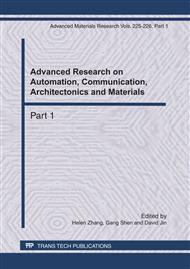p.823
p.827
p.831
p.835
p.839
p.843
p.848
p.852
p.857
Risk Assessment Model to Natural Disaster in County Unit Based on Information Diffusion Technology
Abstract:
Accurate assessment to disaster risk is one of the keys to reducing disaster losses. However, due to the fact that the disaster situation data series in county unit are always relatively short, available data are often not sufficient for disaster risk analysis. In this paper, a risk analysis method based on information diffusion theory was applied to create a new disaster risk analysis model (CURAM), and the risk of disaster can be evaluated on higher spatial resolution of county unit. Visual Basic and Map Objects were used to establish CURAM applying object oriented technique and component technique. CURAM provided risk evaluate function to natural disaster in county unit, and thematic map making and output, etc. The risk assessment results calculated by CURAM indicated that information diffusion technology was highly capable of extracting useful information and therefore improved system recognition accuracy.
Info:
Periodical:
Pages:
839-842
Citation:
Online since:
April 2011
Authors:
Keywords:
Price:
Сopyright:
© 2011 Trans Tech Publications Ltd. All Rights Reserved
Share:
Citation:


